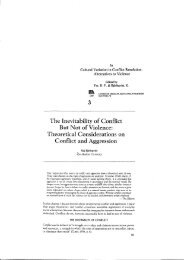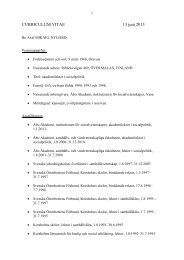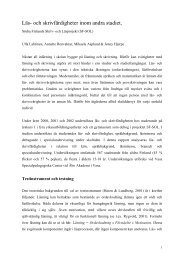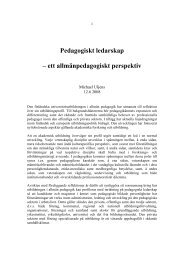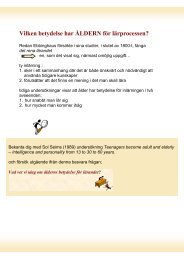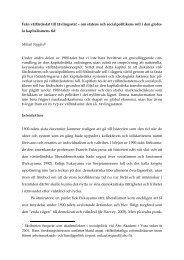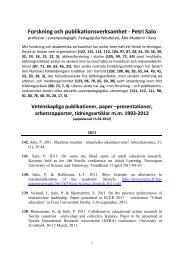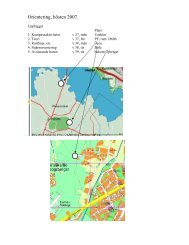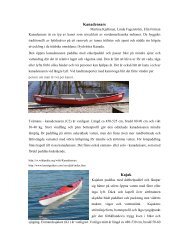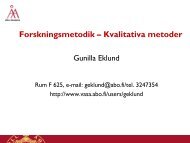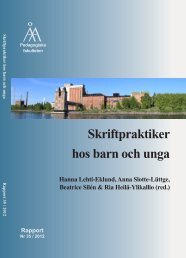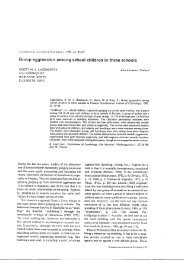Parties, Candidates and Citizens On-Line - Åbo Akademi
Parties, Candidates and Citizens On-Line - Åbo Akademi
Parties, Candidates and Citizens On-Line - Åbo Akademi
Create successful ePaper yourself
Turn your PDF publications into a flip-book with our unique Google optimized e-Paper software.
3. Data <strong>and</strong> methodology<br />
Our focus on both the supply <strong>and</strong> dem<strong>and</strong> side of the Finnish on-line campaign is<br />
reflected in the use of data <strong>and</strong> methodology. Supply side data concerning political<br />
organizations’ websites was collected <strong>and</strong> analyzed by the authors within the Internet &<br />
Elections (IE) Project. The common set of rules <strong>and</strong> protocols involved four steps of<br />
data gathering: identification, sampling, quantitative coding, <strong>and</strong> qualitative annotation of<br />
websites (see further the introductory article of this issue). The identification of sites took<br />
place mainly between mid-April <strong>and</strong> mid-May 2004. In doing this, we followed the<br />
project’s ‘sleuthing guide’ that provided detailed advice for the identification of sites<br />
produced by different actor types. Prior to the EP election, a r<strong>and</strong>om sample of 100 sites<br />
was drawn from the population of sites identified in each country, stratified across<br />
producer types to ensure inclusion of a mix of website types for coding. Quotas were set<br />
as follows: 30% for c<strong>and</strong>idates sites, 20% for parties, 10% for government sites, 10% for<br />
NGOs <strong>and</strong> labour unions, <strong>and</strong> the remainder distributed across other producer types.<br />
Concerning the Finnish sample, the effective number of sites in the sample received was<br />
94. However, since the c<strong>and</strong>idates’ sites dominated the Finnish web sphere, we wished to<br />
further oversample this kind of site. Such an extra oversampling would more truly reflect<br />
the deviant Finnish case <strong>and</strong>, above all, provide a sufficient number of sites to permit<br />
closer inspection of c<strong>and</strong>idates’ website features. Therefore, an additional sample of 25<br />
r<strong>and</strong>omly selected c<strong>and</strong>idate sites was added to the original sample.<br />
A set of 24 measures – including 12 types of information <strong>and</strong> 11 types of<br />
engagement – were employed in coding the sites, based on the project’s objective to study<br />
information <strong>and</strong> engagement features provided on-line by a broad range of actors in<br />
various cultural contexts. The coding took place between two weeks <strong>and</strong> three days<br />
before the election. Additionally, we prepared systematic open-ended notes of significant<br />
features in the sites. Subsequently, in dealing with the dem<strong>and</strong> side, we analyzed survey<br />
data deriving from a research project called Changes in Finnish TV Election Campaigns led by<br />
Professor Tom Moring, University of Helsinki. Within this project, Gallup Finl<strong>and</strong> has<br />
conducted a series of panel surveys since 1992 measuring voter behaviour <strong>and</strong> preferences<br />
at two occasions: some weeks before an election, <strong>and</strong> immediately after the elections. The<br />
survey conducted after the 2004 Finnish EP elections, which we used in this paper,<br />
comprised 1,362 respondents aged 18–69 years, representative of the Finnish population.<br />
To some extent, however, the data exaggerates the use of internet since the respondents<br />
were equipped with home computers by Gallup Finl<strong>and</strong> in order to facilitate participation<br />
in the panel. For the purpose of this paper, this can be considered more of an asset than a<br />
problem: the sample portrays an ideal population that makes it possible to explore how a<br />
66



